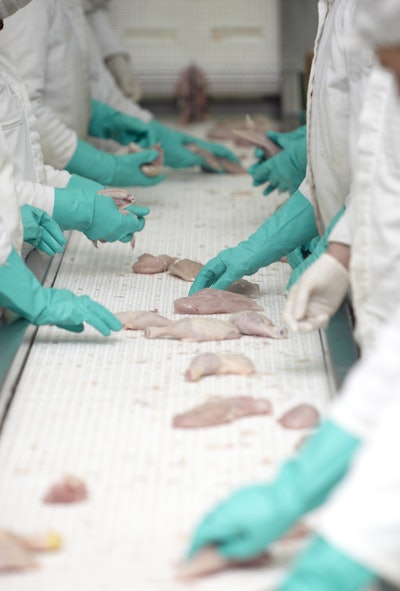
Poultry processors are under pressure to produce a high-quality product quickly while ensuring wholesomeness. Currently, processors are utilizing metal detectors, x-ray systems or workers on the line to identify food safety or quality issues in processing plants. However, there is still a question of what is being missed on the line by the current methodologies.
During the 2021 Poultry Tech Summit Webinar Series on November 11, Olga Pawluczyk, president, CEO and co-founder of P&P Optica, showed how the use of hyperspectral imaging in poultry processing could help more accurately identify food quality issues and detect foreign objects.
“The only thing we are certain of in detection problems is that we can never tell what we have not found or what wrong assumptions we have made. How do we understand what’s wrong with the inspection methodology on a processing line?” asked Pawluczyk.
“Nothing is 100% certain including detection,” stated Pawluczyk. “X-ray machines can only see things that are density based. Metal detectors can only see ferrous materials. Vision systems can only see at or very close to the surface.” However, P&P Optica has created a hyperspectral imaging system that uses light wavelengths to analyze the chemistry of meat and reject product that is out of spec according to large amounts of collected data.
How hyperspectral imaging works
“We’re providing hundreds of wavelength information points per pixelated image and can start predicting the chemical bonds between molecules based on how light interacts with them. Meaning that when something is detected out of the ordinary (such as a food safety or quality issue), it can be identified and rejected,” explained Pawluczyk. “Anything that doesn’t have the same chemistry makeup as raw meat will be identified. The system can also determine what was identified (metal, rubber, plastic, bone, cartilage, etc.) so that the source can be found.”
Pawluczyk went on to explain that because the chemistry of meat is being seen, producers can start providing insights to customers such as meat quality and shift deboning/trimming efficiency. Additionally, the company has been working with processors to identify and reject woody breast on the line.
“In the future, the team is most excited about the ability to trace information back to the farm. Because we can see the chemistry of each piece of meat, we can now start tracing the quality of the product back to what the birds ate, how they were raised, or more.”
What’s Next
For more on the technologies set to advance the poultry industry, join industry-changing innovators, researchers, entrepreneurs, technology experts, investors and leading poultry producers at the Poultry Tech Webinar Series, scheduled for November 30 and December 2.
During the webinar series, industry experts will preview what’s coming next – from prospective solutions to developing technology – for the poultry industry.
This webinar series is proudly sponsored by: Arm & Hammer, Aviagen, Baader, Boehringer Ingelheim, Cargill, Ceva, Chore-Time, Cobb, Evonik, Marel, Phibro Animal Health, Staubli, and Zoetis.
Visit our website for more details on the webinar series, topics and speakers.
Register for free today and join us for a glimpse at the future of the poultry industry.


















